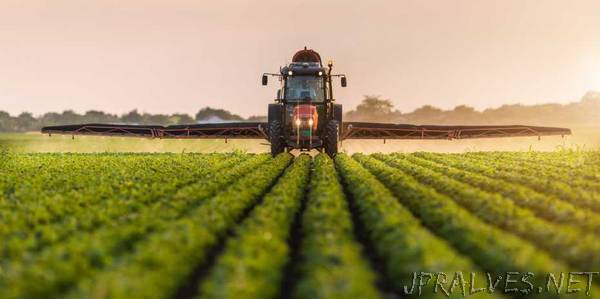
“We must reduce the environmental and health risks of pesticides. However, rather than banning them completely, Robert Finger advocates an intelligent approach to crop protection.
Glyphosate, neonicotinoids, drinking water initiative – renouncing pesticides is currently the subject of fierce discussion. For while on the one hand our nutrition system cannot function without crop protection, especially pesticides carry undisputed risks for humans and the environment.
Prohibition of the main plant protection products stands at the heart of the debate. The EU imposed a complete ban on the outdoor use of three common neonicotinoids at the end of April 2018, as these neuroactive insecticides are also harmful to beneficial organisms such as bees. Also on the political agenda is a possible ban on glyphosate, the most widely used pesticide in the world.
There are currently two public initiatives in Switzerland that go even a step further. The “Clean drinking water and healthy food” initiative wants subsidies to be paid out only to farms that – among other things – do not use pesticides. Meanwhile, the initiative “Save Switzerland from synthetic pesticides” aims to ban the use of synthetic pesticides in general.
The private sector is also a driver of bans and restrictions. “Glyphosate-free” milk in Germany and “residue-free” fruit and vegetables (zéro résidu de pesticides) in France: renouncing pesticides is increasingly a key marketing argument.
What are good policy solutions?
I believe we have no option but to significantly reduce the risks to humans and the environment posed by pesticides, and that this should be our objective. However, bans and restrictions are not always effective because they can have undesirable side-effects.
«In order to create a basis for political decision-making, we must examine all conflicts of interest.»
Robert Finger
For example, imposing a ban on a specific product may encourage crop-growers to turn to other, more toxic ones. Other environmental objectives could get compromised and the cost of crop protection could increase. Both the quantity and quality of food could fall while prices could rise. It is conceivable too that fruit and vegetables would increasingly be grown under netting and foil, which would change the face of our landscape.
Getting the overall picture
In order to create a basis for political and economic decision-making, we must examine and quantify all conflicts of interest1. We don’t yet have a clear enough picture of what agriculture with fewer pesticides would look like.
For instance, we’re currently investigating how forgoing glyphosate or all herbicides could affect selected arable crops. We use bioeconomic models to depict weed pressure and control strategies, as well as the decisions taken by farmers. In this way, we simulate how farmers behave when biophysical, economic or legal conditions change.
We’ve been able to show that cultivating maize without the use of glyphosate intensifies soil cultivation, but overall reduces the use of pesticides2, with only a slight increase in average costs for the farmer. This means, by implication, that higher prices for glyphosate could reduce its use. The alternative – more intensive soil cultivation in the event of a ban – would, however, increase energy consumption, soil erosion and CO2 emissions from agriculture.
Incentives for good plant protection practice
I’m also convinced that we need new ways to reduce the risks of using pesticides without jeopardising other services provided by the sector. The digitisation of agriculture has a decisive role to play here: autonomous robots and drones can detect and control weeds, pests or diseases and so drastically reduce or completely replace pesticides. The agriculture of tomorrow must also strengthen preventive measures in the form of biological and mechanical control strategies. Last but not least, the breeding of resistant strains can also make a significant contribution to crop protection.
In my opinion, these approaches should be encouraged. However, what are needed too are economic instruments to make agricultural production more sustainable. Instead of simply banning active substances, the environmental damage caused by pesticides should be internalised when drawing up policies: for example, a steering tax could provide an incentive to replace harmful products either with less hazardous products or non-chemical strategies.”
